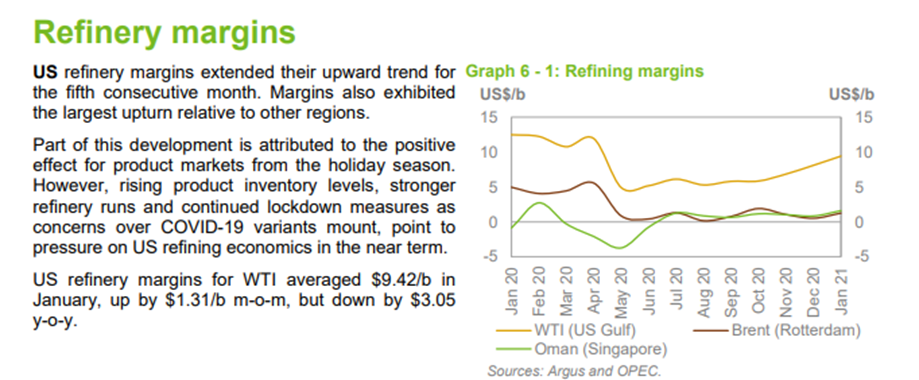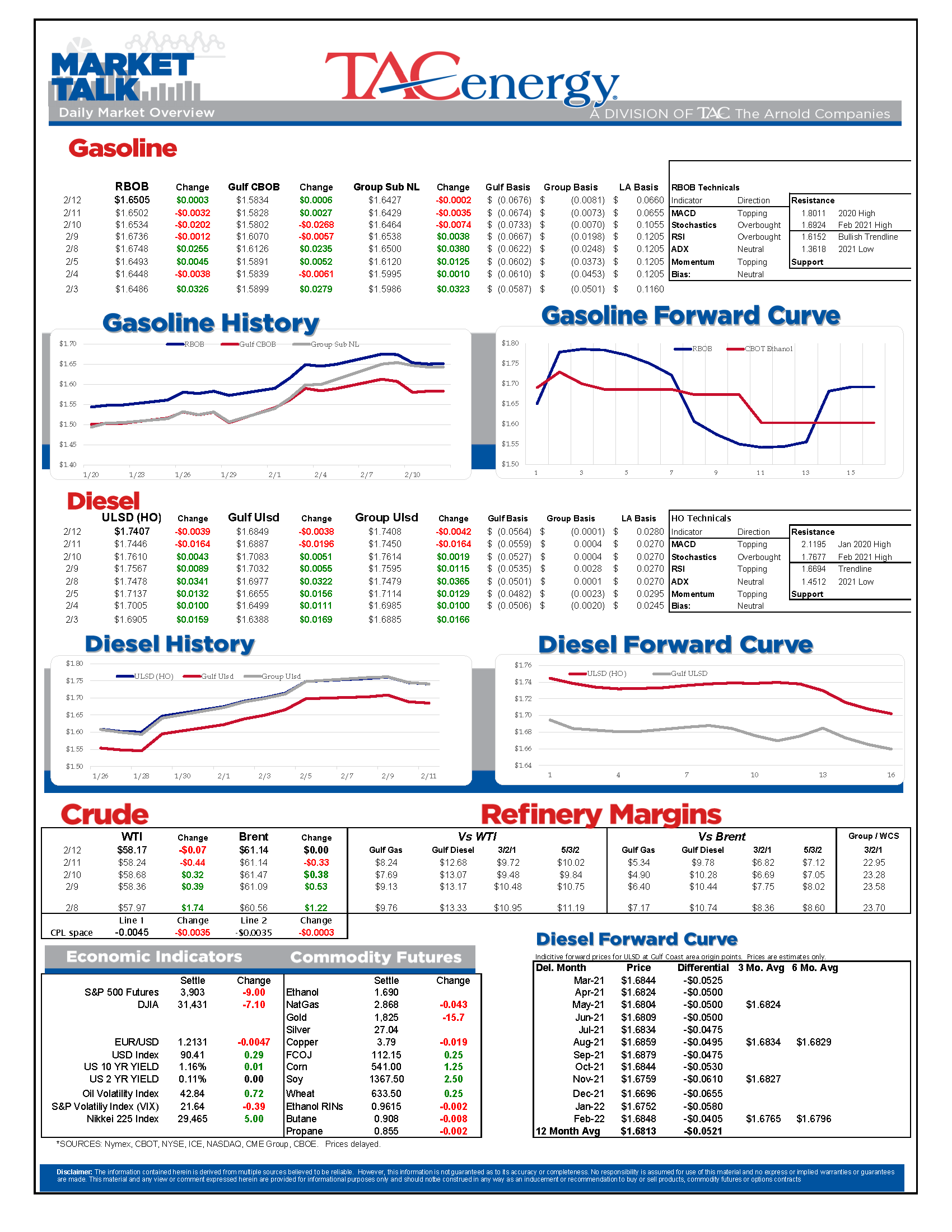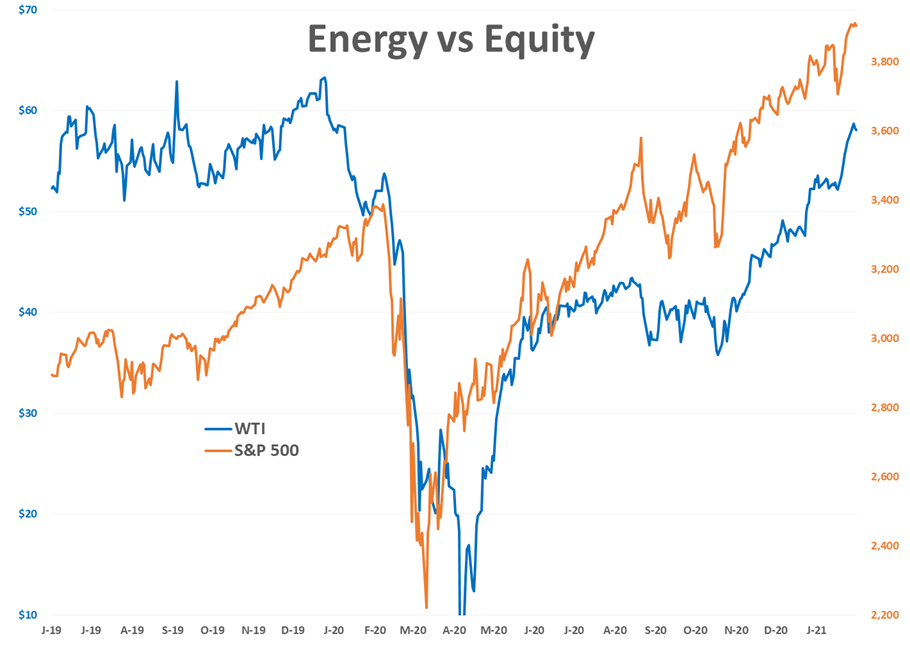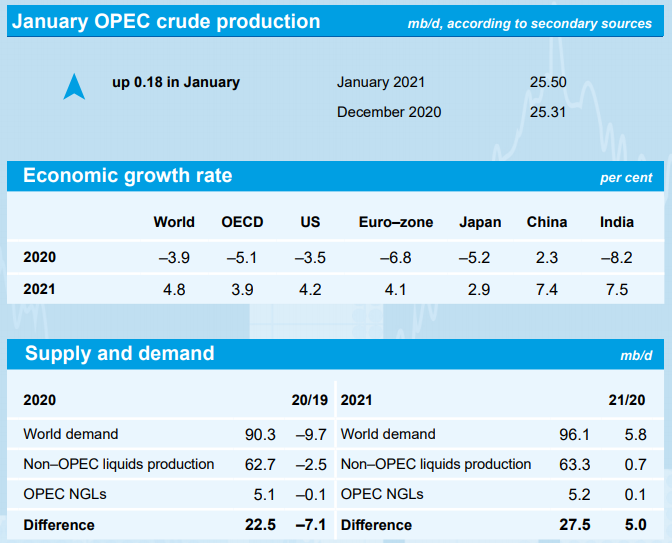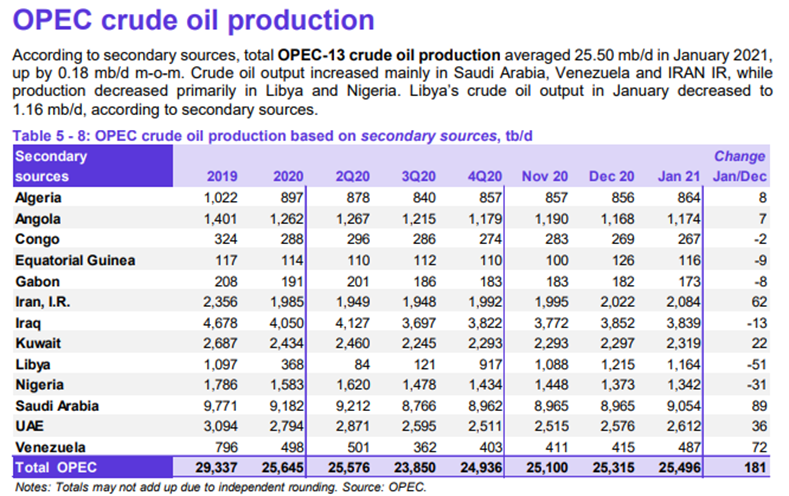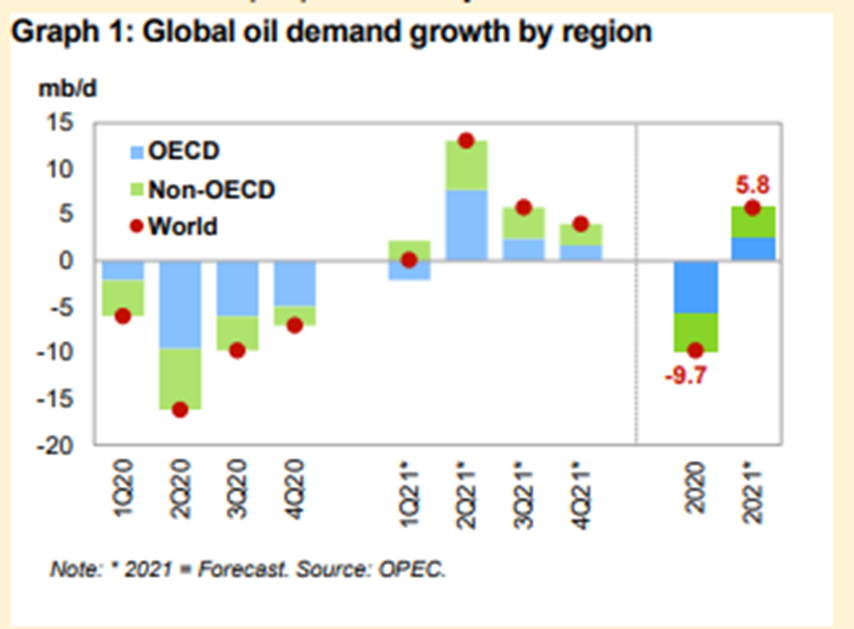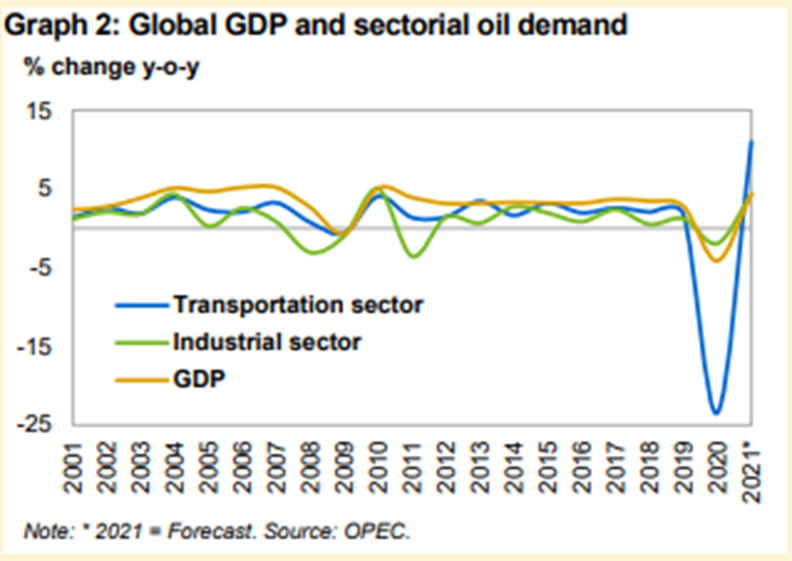Another Soft Start For Energy Markets

It’s another soft start for energy markets Friday as the upward momentum has waned in the back half of the week. Although most prices are still modestly in the red (March RBOB did manage to turn positive around 8 a.m.) we’ve already seen refined products bounce 1.5 cents off of their overnight lows, and they haven’t yet even tested the upward-sloping trendline, so it’s still too soon to call an end to the 3.5 month old bull market, which marks the longest sustained rally in two years.
A rally in the U.S. Dollar is getting some of the credit for the pullback in oil prices, even though the correlation between the two has been strongly positive for much of the past month, reversing the normal relationship. A pullback in equity markets after reaching fresh record highs this week is also getting some credit for the pause in the rally, and the correlation between daily moves in the S&P 500 and WTI remains north of 80%.
OPEC’s monthly oil market report showed the cartel’s total output increased by 181,000 barrels/day in January, with increases from Saudi Arabia, Venezuela and Iran offsetting decreases in Libya and Nigeria. We should see a sharp drop in output soon as Saudi Arabia prepares its unilateral production cuts it announced when it couldn’t convince the Friends of OPEC alliance led by Russia to cut output to avoid flooding the fragile market with supply. Like all of the other monthly reports released this week, OPEC expects an acceleration in demand growth in the back half of the year but the full year demand estimates were revised slightly lower from last month due to extended lockdowns.
Did you know refinery-effect snow was a thing? It happened this week in Denver, and based on the forecast, some plants in TX and LA could experience something like this next week, that is if they’re still able to operate through the record-setting cold that’s forecast for parts of the country that don’t insulate their pipes. Expect to see some terminal and/or refinery disruptions if the forecasted temperatures materialize across the south, not to mention the likelihood that trucks may breakdown if they leave their diesel untreated for the cold.
Monday is President’s Day, so spot markets will not be assessed, and most rack prices will carry through from tonight until Tuesday. NYMEX contracts will trade in an abbreviated session on Monday, but there will not be a settlement.
Click here to download a PDF of today's TACenergy Market Talk.
News & Views
View All
ULSD Futures Are Trading Higher For A 5th Straight Session
Energy prices are trying to rally Thursday as the liquidation cycle that pushed prices to multi-month lows earlier in May appears to have ended and new supply concerns trickle into the market. ULSD Futures are trading higher for a 5th straight session, and although the gains are minor at this point, they do suggest that buyers are willing to jump in near the pivotal technical support layers just below the $2.50 mark, and that the fund liquidation that pushed the HO contract to a net short position for money managers is probably over. RBOB futures are trading 8 cents above Wednesday’s low which also suggests that a buy the dip mentality may be taking hold, and now we’ll just see how long it lasts.
The latest in the drone wars: After a major Russian attack focused on Ukraine’s electricity infrastructure earlier in the week, Ukraine’s drones reportedly struck back hitting a Lukoil fuel terminal near Crimea, and a Gazprom oil refinery more than 1,000 miles from the border.
What feedstock problems? A surge of imports of used cooking oil (UCO) from China to the US, used to make RD with a lower CI score, has several domestic producers crying foul and adds to the long history of fraud surrounding renewables as bad actors try to take advantage of government subsidies.
The excess of Renewable Diesel on the west coast is only adding to the relative weakness of diesel margins for refiners who have watched their distillate cracks erode to the lowest levels since January 2022 over the past few months. A Reuters article this morning highlights the challenges that poses, and it will only get worse if the recent rebound in gasoline margins fails to hold. That excess of renewable production targeting the West Coast is also contributing to California’s LCFS values dropping to multi-year lows this week, which is putting pressure on earnings for companies that races to convert refineries to RD production in recent years.
Speaking of which, HF Sinclair reported another net loss in its renewable segment in Q1, while its traditional refineries followed the recent pattern of decent earnings that were far below year-ago levels.
Energy News Today reported a fire at the HF Sinclair refinery in Anacortes WA Wednesday which seemed to contribute to stronger basis values in the typically illiquid PNW spot market, and some tightening of allocations by suppliers in local terminals. In hopefully unrelated news, the company posted a job opening for an Emergency Response Specialist at that facility just last week.
P66 reported yet another upset at its Borger refinery Wednesday, marking the facility’s 14th TCEQ filing of the year so far. Two different sulfur recovery units were noted as being impacted by the event, but it appears the units were able to restore operations.
Click here to download a PDF of today's TACenergy Market Talk.

Week 18 - US DOE Inventory Recap

Crude Oil, Gasoline, And Diesel Benchmarks Are All Trading >1% Lower To Start The Day
Energy prices are sinking again this morning, albeit with a little more conviction than yesterday’s lackadaisical wilting. Crude oil, gasoline, and diesel benchmarks are all trading >1% lower to start the day with headlines pointing to an across-the-board build in national inventories as the source for this morning’s bearish sentiment. The Department of Energy’s official report is due out at its regular time this morning (9:30am CDT).
WTI has broken below its 100-day moving average this morning as it fleshed out the downward trend that began early last month. While crossing this technical threshold may not be significant in and of itself (it happened multiple times back in February), the fact that it coincides with the weekly and monthly charts also breaking below a handful of their respective moving averages paints a pretty bearish picture in the short term. The door is open for prices to drop down to $75 per barrel in the next couple weeks.
Shortly after the EIA’s weekly data showed U.S. commercial crude inventories surpassing 2023 levels for the first time this year, their monthly short-term energy outlook is forecasting a fall back to the bottom end of the 5-year range by August due to increasing refinery runs over the period. However, afterward the administration expects a rise in inventories into 2025, citing continued production increases and loosening global markets hindering the incentive to send those excess barrels overseas. The agency also cut back their average gas and diesel price forecasts for the first time since February with the biggest reductions in the second and third quarter of this year.
The STEO also featured their famed price prediction for WTI, stating with 95% confidence that the price for crude oil will be between $40 and $140 through 2026.
Need a general indication of the global crude oil supply? Most headlines seem to be covering a shortage of a different type of oil, one that we haven’t turned into fuel (yet).
Click here to download a PDF of today's TACenergy Market Talk.
